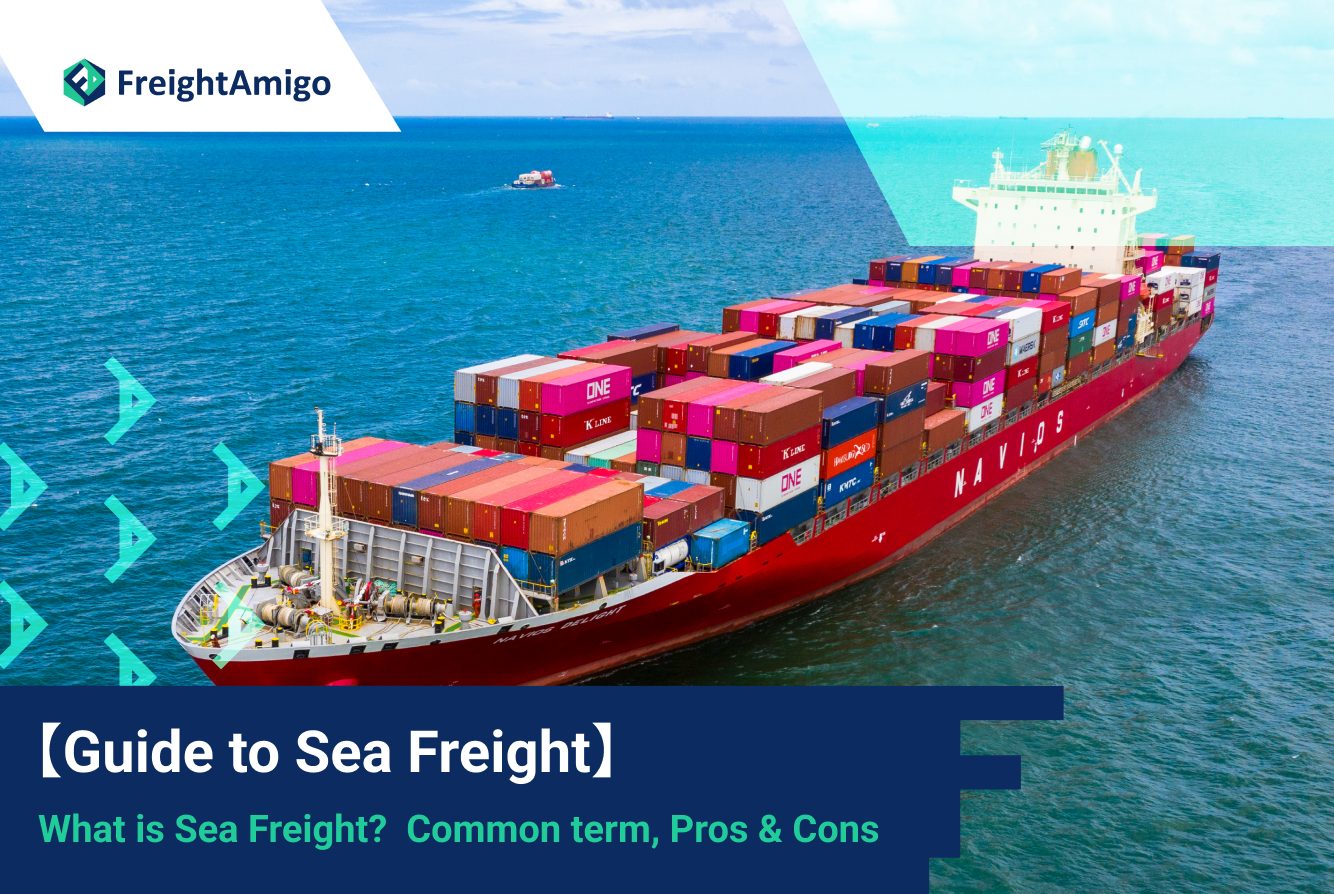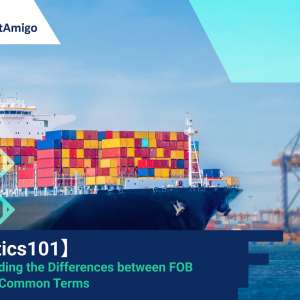Author Name:Tiffany Lee – Marketing Analyst at FreightAmigo
Choosing the most suitable shipping method is crucial for a successful and cost-effective shipping experience. The right shipping method depends on several factors, including the type of goods being shipped, the destination, the required delivery time, and the budget. It’s also important to consider any special requirements, such as customs clearance or hazardous materials handling, as these may impact the choice of shipping method. Ultimately, choosing the right shipping method requires careful consideration of all relevant factors to ensure a successful and efficient shipping experience. The following content will introduce sea freight, like the advantages and disadvantages, the process, etc. You may know more about sea freight which helps you choose the most suitable shipping method.
Want to compare sea freight services of different shipping companies instantly to control shipping costs?
What is Sea Freight?
Ocean freight refers to the transportation of goods by sea, typically via shipping containers. It is the most widely used mode of transport for importers and exporters, with approximately 90% of goods being shipped by this method. Although other modes of transport, such as air freight and express delivery, are faster, they are also more expensive and typically used for smaller shipments or high-value items.
How does Sea Freight work?
If you decide to ship your items by sea freight, the factory or a third party will pack and palletize them for you. Your forwarder will reserve space on the container ship, and at the port of departure, the cargo will be inspected by customs. The items will next be loaded by FCL or shared container aboard the ship for shipment. The cargo will pass through customs once the ship reaches the port of discharge and be released following the payment of taxes and fees. The products will now be transported to the warehouse in preparation for delivery to the final client.
There are several shipping alternatives available depending on the type of goods. The shipping of products in typical 20 or 40 foot containers is known as full container load (FCL). Because their cargo volume is too tiny to fill an entire container on their own, shippers who ship in lesser quantities (LCL) share container capacity.
FCL&LCL
Ocean and sea freight services are divided into two options: full container load (FCL) and less than container load (LCL). In LCL, multiple shipments are consolidated into one container, which requires extra paperwork and physical work for the forwarder. This gives LCL three disadvantages:
- LCL takes longer to deliver than FCL, usually requiring an extra one or two weeks.
- There is an increased risk of damage, misplacement, and loss with LCL.
- LCL costs more per cubic meter.
Since FCL shipping rates are lower, it may be beneficial to use a full container even if the shipment does not fill the entire container. The tipping point for upgrading from LCL to FCL (the smallest container size is 20 feet) is around 15 cubic meters.
Advantages of Sea Freight
- Value and Capacity – Moving freight by water is a cost-effective choice that can handle bigger shipments. In general, air freight costs higher for any shipment weighing more than 500 kg.
- Less Restrictive – What goods can be considered hazardous for shipping is defined and constrained by international law, national legislation, carrier organization regulations, and individual carrier restrictions. In general, air cargo is subject to additional limitations than maritime freight, including those pertaining to gases, combustible materials, hazardous or corrosive substances, magnetic materials, oxidizers, biochemicals, and dangers to the public’s health. For more details, consult the table of hazardous materials.
- Emissions – Compared to air cargo, marine freight generates much less CO2. In light of this, delivering freight by sea is a more environmentally beneficial choice.
Disadvantages of Sea Freight
- Speed – Shipping by sea takes longer since ocean ships are slower than airplanes. Ocean shipping is not the greatest option to send urgent materials.
- Reliability – Sea shipments frequently take longer than air shipments due to port congestion, customs holdups, and bad weather. Furthermore, tracking equipment for air cargo is frequently more sophisticated than for maritime freight. As a result, sea freight has a higher chance of being lost, especially if it doesn’t fill a whole container. But, as digitization spreads, sea freight is becoming more dependable.
- Protection – Compared to air cargo, sea cargo is more prone to damage or destruction. This is a result of the longer voyage time and increased vulnerability of ships.
Using the FreightAmigo platform can help you find the most suitable logistics solution. You only need to enter the shipping address (origin and destination), cargo weight, cargo quantity, and amount on the platform, and the platform can provide the estimated transportation time and amount of different international express, air, sea, rail freight, and truck logistics management solutions. FreightAmigo helps you handle different customs clearance procedures, more accurately control the arrival time, and ensure the smooth delivery of goods.
FreightAmigo helps you simplify freight procedures and ensure the smooth delivery of goods! If you are planning to ship goods overseas, please go to the FreightAmigo page for inquiries.
Read More:
【Guide to Air Freight】Costs, Pros & Cons for Your Cargo
【Logistic101】 CIP Meaning and Usage of Incoterms
【Logistics101】How to Calculate Shipping Time
If you have any inquiries on logistics/supply chain, feel free to contact FreightAmigo now:
Chat with us online OR
Phone / WhatsApp: +852 281216868121686



